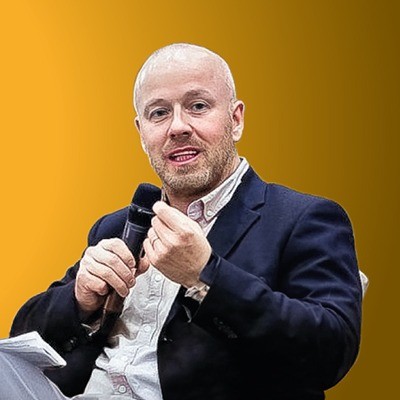
This article was co-written by Kieran Gilmurray and Jessica Levett.
Despite the fact that Agile took off in software development circles in the 2000s, and dozens of books have been written about Agile over the past two decades, if you asked a random group of people what ‘Agile’ is, then you will inevitably get very different answers.
For most companies, Agile is confined to software development. Forward-thinking companies are taking advantage of the same Agile techniques that have transformed software development. For example, paired programming (shared learning); visual management systems and workspaces (transparency); retrospectives (reflect and improve); co-location (or rather ‘glo-cation’ global location, rapid release and iteration planning (speed to market); test-driven development (small bets, not betting the firm); evolutionary design (release waves of value), etc.
But becoming truly Agile isn’t easy. Organisations considering Agile must ensure they are not Agile in name only. They should not focus on ‘doing Agile but ‘being Agile’. Agile requires big changes in culture, values, and behaviours across an entire organisation. If executives fail to exemplify Agile behaviours, and instead delegate Agile ways of working and behaving to their managers, then Agile usually fails. To become an Agile organisation, everyone must work in Agile teams.
Surveys by Deloitte and McKinsey suggest that more than 90% of executives give high priority to ‘business agility’, even though less than 10% see their current firm as ‘highly agile.’ Agile has entered the mainstream and is becoming the default way to lead the largest and most valuable firms in the world (e.g. Spotify Apple, Facebook, Google, Netflix, Microsoft, etc.). These firms are recognisably Agile in much of what they do, even though most don’t use standard Agile vocabulary.
Why is Agile key? In the digital era, every aspect of business needs to move faster than ever before. Organisations operate in a business environment that is increasingly uncertain, ambiguous, and complex. They need to become as nimble as the rapidly shifting market context in which they now find themselves. Agile is no longer an option, but a necessity.
Agile methods are more collaborative and creative and can be more efficient than other business models. Agile enables organisations to cope with continuous change. Agile offers ten key benefits including;
1. Agile enables teams to change direction quickly and at a low cost. Organisations that are highly Agile can act and respond faster than their competitors. Such agility provides a competitive advantage as Agile ways of working promise almost instant, frictionless value delivered on a large scale.
“Agile is about being dynamic, responding rapidly and easily to change. At the moment Agile is leading change in the IT industry and many other industries. The way IT teams work not only as a team but on the product is based upon constant learning and development. Its principles can be applied in our own mindsets to become more effective as a whole.”
2. Primacy of the customer. The highest priority, as the Agile Manifesto states, is to satisfy the customer. Agile practitioners are obsessed with delivering value to customers. Small teams work in networked organisational arrangements rather than top-down bureaucracy and silos. They deliver value in a short delivery, receiving continuous feedback from the ultimate customer or end user. This is then used to deliver even more value.
One of the best skills you can behold is listening. The more you listen, the better you can understand the requirements of the customer. When you become ‘obsessed’ about something you become a sponge for new information. Soak up what you hear, apply it, rinse, and start again.”
3. WFH and self-organising. Agile should be done in small, high-performing, autonomous, cross-functional teams. High performing Agile teams take initiative on their own. They interact directly with the customer or end user and with other Agile teams to solve problems to continuously provide new, sought after value.
“With freedom comes responsibility, for yourself and your team. You work together in self-organising groups as a hive. There is no time for buzzing about, communication is key! Team members will benefit most from spending time together in group building activities. Time to work together on nonhoney making tasks helps strengthen collaborative working and communication.”
4. Small teams. Organisations can no longer afford big teams. Agile teams are small enough to collaborate closely but large enough to possess the necessary skills to execute successfully. There is no right team size, although squads of 5 to 10 people are common, as long as there are sufficient numbers to perform a given process from beginning to end.
“Ever heard of less = more. When you have smaller teams you understand that there is no place to hide. Tasks are more transparent and personal liability takes greater hold. If there is a good working dynamic within the small group you’ll be able to hustle together really well! So focus on creating positive work environments and transparency with tasks.”
5. Organisations must focus on a hierarchy of competence, not hierarchies of authority. Digital technologies and social media have enabled everyone to talk to anyone. As such, ideas and innovation can come from anywhere and from anyone, particularly customers. For organisations to truly embrace Agile ways of working, their senior executives have to change their ways of working. They must prioritise competence over authority or ego.
“With Agile we remove the face behind the mouth. If you are in the room, you have the right to speak. There is no point in talking if no one is listening. So having one person talking for two hours won’t keep a team awake and promote collaboration to achieve a common goal. It’s like in school and the teacher has to pick on the kid sleeping on their desk to invoke a response. If you make the kid feel that their responses are valid they may just pay more attention and get work done!”
6. New staff entering the workplace demand to be managed differently. Agile teams work for the good of the customer not for the betterment of a particular manager, function or division. Millennials want to work for organisations that want to unlock their potential. Millennials are blessed with confidence, energy and ideas. They want to be able to speak up for the good of the company rather than a particular manager, function or division. Agile encourages:
- Openness. Agile teams are receptive to feedback on their own behaviour, performance and activities.
- Trust. Agile team members feel comfortable that not everything will be planned; that end user or customer feedback. trial and error will eventually show them the right direction.
- Collaboration. Agile teams focus on the greater good of the company, which is not necessarily good for a particular unit, manager, function or division.
- No Ego. Agile teams encourage everyone to speak with one unified voice.
- Transparency. Agile team calls out those unwilling to change or to adopt new ways of working and behaving.
- Accountability. Agile teams hold one and others accountable for delivery.
“Agile is based upon principles. Now the main thing that principles do is bring together different kinds of people to do the right thing, for themselves and for each other. Without that, negative power holds triumph, and thinking becomes accumulated to one thought process. With principles, people have leeway to think differently and act responsibly.”
7. Anti- bureaucracy. Agile helps obliterate organisational bureaucracy and top-down hierarchy that stifles communication and innovation. Most large organisations are structured around silos, specialist functions or divisions. To implement Agile across an organization, teams must work together. They must work and behave differently than before, from the top of the organisation to the bottom. Agile must be practiced at the top, middle and bottom. Continuous collaboration must be encouraged. Interaction with customers, not something that bureaucracies are not good at, must be encouraged at every opportunity. Leaders must destroy barriers that block Agile behaviours.
“Pyramid structures should not exist within an Agile organisation. Instead, ‘Agile’ bubbles should reflect different competencies across the same space. Don’t go popping bubbles with your index finger. Make space for them to grow so that they can work together to fill the requirements.”
8. Customers and organisations demand rapid change. Organisations can no longer afford, nor do they want to wait 12-18 months for projects to deliver the outcomes they need. Agile outcomes are delivered in short cycles. Work is completed in an iterative fashion with continuous interaction with users and customers. As such, organisations can constantly update what it delivers to each individual user, sometimes almost in real-time. Value and results are delivered and counted in weeks not years.
“I’m going to show you just how good I am in 2 years’ time, just you wait and see. I’m going to publish one big article and everyone will love it. Ummmm no. To create those amazing results and retain your audience’s attention, work needs to be delivered iteratively. Value needs to be released bit by bit over an extended period of time. Shorter product releases are more effective and help keep others (customers) interested for longer.”
9. Millennials require servant-leaders. Leaders should no longer assess individuals on their ability to complete specific tasks, but on their effectiveness in delivering end-to-end outcomes for customers. Leaders who focus on themselves need to go. Agile leaders must first and foremost focus on helping their employees perform optimally and collaborate effectively. Leaders must welcome a loss of traditional control.
“No one wants people breathing down their neck. It’s cold and isolating. It’s not going to promote positive change. It devalues team members and breaks trust. What we need to do is ask questions, work together, allow room for reciprocation and reject hierarchy. If servant-leaders demonstrate how to do something at the outset, then Agile team members can do it themselves the next time. What’s good about that for leaders? It’s better for employee longevity. It means less work for leaders in the future and many other benefits. Organisations need to decentralise their approach to facilitation.”
10. Organisations need to achieve more with less. Agile is not about working harder, it’s about working smarter. Agile is not about doing more work in less time: it’s about generating more value with less work
“Ever had bread and butter pudding? If not look it up. It’s what the grown ups used to make when all they had was stale bread and raisins. It’s all about creating more with less. It’s about doing what you can to help your unit by generating value from nothing. It doesn’t require much effort to feed the people around you. The same goes for work. Funny how the simple things in life teach you the greatest lessons!”
Roles and goals. Every member of an Agile team has a part to play. Agile focuses on having an equal playing field and open discussions which bring about honest conversation and transparent communication. Around the world, people can connect and deploy applications in their remote workspaces. Never have we needed that more in today’s current climate. The fact that we have the ability to do this is life-changing.
“Now, when it comes to roles in Agile you’ve got at least A Scrum Master (i.e. the servant leader), a Product Owner ( i.e. the holder of product value) and a Development Team (i.e. the self-organising group). At the end of the day, their goal is to release a working product. We can’t do that if we don’t work together… trust me. Without guidance and facilitation, there is no way that it’s going to be the most efficient way of releasing a product not to mention the communication would be as plausible as a game of Chinese whispers.”
Agile arose as a response to rapid change, growing organisational and market complexity, as well as a shift in power from producers to consumers. Today it is no longer the technology itself that makes a difference. The same technology is available to all organisations. It is how teams coordinate and communicate that differentiates the winners from the losers. In the digital era, every aspect of business needs to move faster.
Agile helps them do that.
When companies implement Agile across their entire organisation, their ways of working, communicating and delivering can improve dramatically. When the whole organisation truly embraces Agile it becomes a fluid and transparent network of players that work together as a team. Teams deliver better results when everyone is focused on delivering value to the customer rapidly. Our digital age demands Agile and all the benefits it brings.
“In the past Agile practitioners mainly focused on operational agility. In the digital era, Agile is about embracing a different mind-set. But since Agile is a mind-set, you can lose it as well as acquire it. Agile ideals cannot be delegated Agile to subordinates. Agile only succeeds if everyone in the organisation adopts, exemplifies and practices Agile methods and thinking.”
What do you think?




